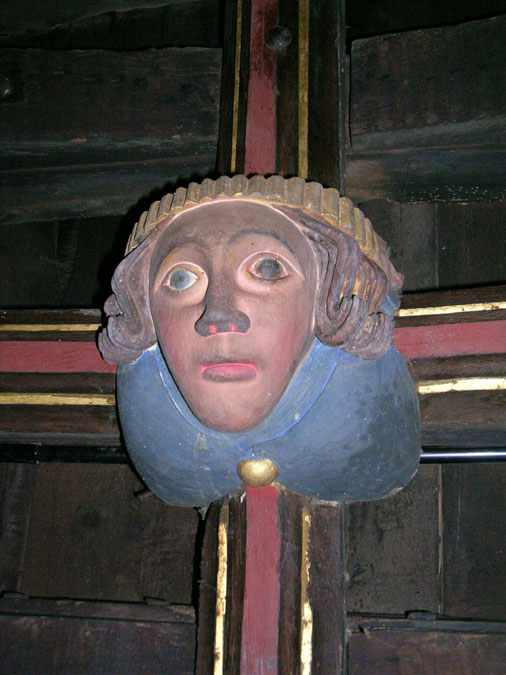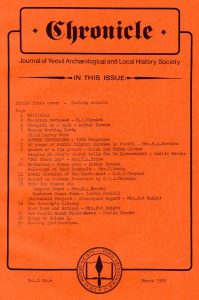This article came from Chronicle published March 1981. Page: 13-15
Report on Pottery Recovered – Yew Tree Close, Yeovil and Trent
Author: W.T.J.Chapman
Site: Yew Tree Close, Yeovil. N.G.R. 5420 1480.
Pottery
Group analysis, The pottery has been divided into three groups, bags marked 1 & 2 both contain shards belonging to two individual vessels, while the third bag contains miscellaneous body shards belonging to many vessels.
(1) Group breakdown. No.1 No.2
Rim shards 6 4 1
Neck shards 3 2 1
Body shards 20 1 –
Base shards 1 1 –
(2) Descriptions,
No.l. Bell-mouthed cookpot rim (some pieces fitting). Fabric surfaces oxidized to a buff/orange colour with external discolouration. Reduced light grey/blue core. Tempered with quartz and chert.
No.2. Rim, large cookpet/storage vessel, thick and heavily made.
Orange oxidized fabric surfaces, discoloured, with reduced blue/grey core. Coarsely tempered with chert, quartz and flint?
(3) Dating.
The form of the bell-mouthed cookpot (no.1) is common throughout the early medieval period. An example from Becker, Chapel (Rahtz & Hirst 1974,No.24) was thought to belong to an early 11th century date, whereas a similar vessel form from Beer, Devon (Jope & Threlfall 1958,No.5) is from a 12th/13th century context. The Beckery example contained limestone grits, which appears to be a pre-Conquest characteristic. This form of temper is absent in example No.1.
The example No.2 belongs to a form of heavily-made vessel common in the late Saxon and early medieval periods. A number of similar forms have recently been illustrated (Rahtz 1974), belonging to the late Saxon period however, the nearest example of this type are from the group excavated from the Keep at Taunton Castle (Gray 1926-9) belonging to a post-Conquest period.
The overall date of the group.probably belongs to a period of the late llth and 12th centuries.
Bibliography
Rahtz & Hirst 1974 : Beckery Chapel, Glastonbury 1967-8 : Glastonbury Ant. Soc, 1974
Rahtz 1974 : Pottery in Somerset A.D.400-1066 – in Evison Hodges & Hurst Medieval Pottery from Excavations : John Baker, 1974.
Jope & Threlfall 1958 : Excavations of a Medieval Settlement at Beere, North Tawton, Devon – in Med.Arch.2,
Gray : Unpublished material (1926-9)
A preliminary analysis of the pottery from Trent N.G.R. 5920 1857
Synopsis: The group contains of the:
1 Medieval
(i) coarse gritted cook pot type
(ii) smooth tempered cook pot type
(iii) jug (glazed vessel.) types.
2 16th century
3 Post medieval.
17th 18th 19th.
1 (i) Medieval coarse gritted cook pot type.
Fabric: Angular chest and flint grits (dissimilar to Mudford types).
All size temper rates – basic matrix with a few small voids.
1 rim shard, 7 body shards.
(ii) A Medieval smooth tempered cook pot type.
This sample group is small – the fabric appears to have small voids varying in density character slightly from one another. There is a similarity with the Mudford fine fabric group although it is too early to definitely ascribe this group to the former source.
3 rim shards. 6 body shards. 1 base shard.
(iii) Medieval type jugs (glazed vessels)
2 body shards. 1 base shard thumbed. Two fabric groups represented.
(a)brick orange red coloured shards slightly micaceous sand temper. Probably local – source unknown.
(b)base shard thumbed similarly in fabric the Mudford group.
2 16th century.
(a)6 body shards with external green glaze. Made at Woodford Farm, Crock Street, Donyatt (Crock Street).
(b)1 shard rim, pancheon. Probably local, similar in form to Donyatt examples of the period.
(c)4 body/base shards unascribable, but probably 16th century.
3 Post medieval – This group is well represented with the Donyatt wares forming the bulk and spanning the period 17th 18th and 19th centuries. There are two groups of local types.
An 18th c Hampshire/Dorset group
(2 sh)
and an 18th century local type.
1 shard Westerwald stoneware c.18th century.
1 shard German stoneware (of similar type to Bellarmine)
1 plate shard from Leeds or Staffordshire, which has been fire-damaged in a bonfire.
Grateful thanks are expressed to Mr.Terry Pearson for having prepared the two above reports relating to this pottery.

